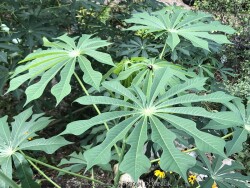
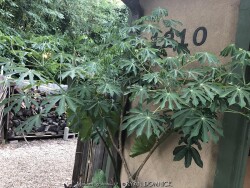
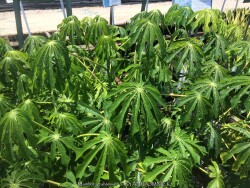

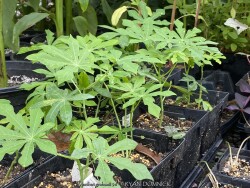
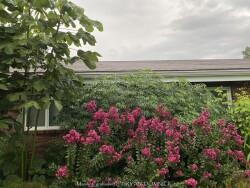

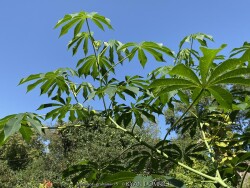
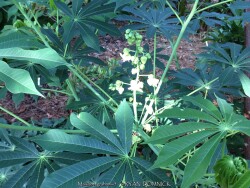
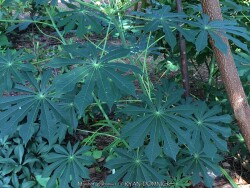
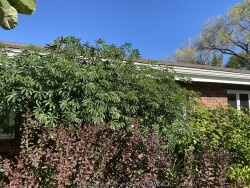

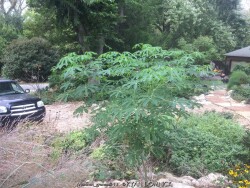
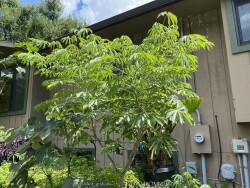
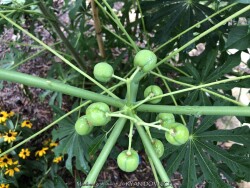

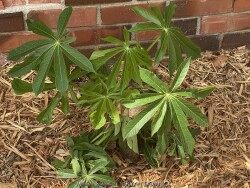

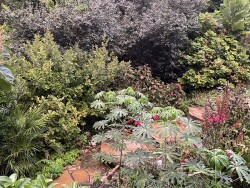
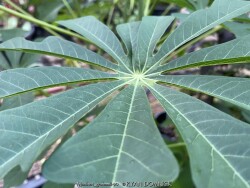
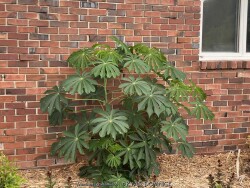
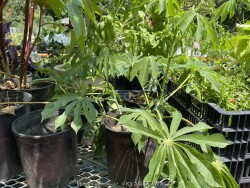
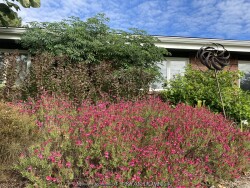
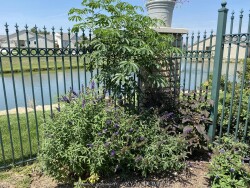
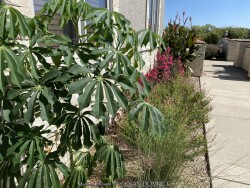
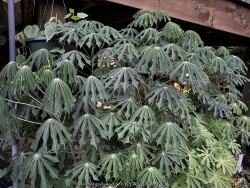
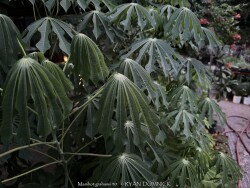
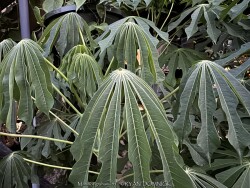
Plant Min Zone: 6b
Plant Max Zone: 11b
Sunlight: All Day Full Sun, Full Sun, Part Sun
Water / Rainfall: Low, Average, High
Soil Quality: Average, Rich
Bloom Season: Summer, Late Summer
Flower Color: Yellow
Berry / Fruit Color: Green
Spring Foliage Color: Green
Summer Foliage Color: Green
Fall Foliage Color: Green
Evergreen Foliage: No
Winter Interest: No
Scented Flowers: No
Drought Tolerance: Medium
Wet-Feet Tolerance: Low
Humidity Tolerance: High
Wind Tolerance: Low
Poor Soil Tolerance: Clay Soils
Height: 4' - 8'
Width: 4' - 6'
Growth Rate: Fast
Service Life: Medium: 3-5 years
Maintenance Need: Medium
Spreading Potential: Medium
Yearly Trimming Tips: Trim Perennial to Ground Around First Fall Freeze: No Winter Interest.
Plant Grouping Size: Specimen Planting of 1-3
Best Side of House: South Exposure
Extreme Planting Locations: Resistant to Rabbits
Ornamental Features: Multiple Seasons of Interest, Exceptional / Colorful Foliage, Long Lasting Fall Color
Special Landscape Uses: None
Possible Pest Problems: Root Rot Disease
Plant Limitations: May get Occasional Winter-kill, May be Poisonous, Needs Thick Winter Mulch, Late to Emerge or Leaf Out in Spring, Unwanted Self-seeding
Shippable in 2026: YES
Hardy Tapioca (Manihot grahamii) is typically grown in warmer zones as a shrub or tree in the family Euphorbiaceae native to South America. Along with other tropicals and succulents in Kansas, hardy tapioca is usually grown as summer patio plant with amazing artistically whorled green leaves and small yellow flowers loved by bees. Water regularly and place in full sun or part shade. Protect from temperatures below 20 degrees F and move into a cold garage or basement over the winter with minimal watering. Do not allow the pot with rootball to freeze solid or go below 15 degrees for more than a few hours. Allow to go dormant as needed with little care, just cut off dead foliage/twigs and place back out in April or May with a time-release fertilizer. You may also propagate this plant easily by cutting off dormant twigs/branches and stuffing them into the ground. Notice that I didnt say rooting hormone or even being carefull was necessary! Landscapers also plant these as an annual in the ground for an enormous tropical effect with growth reaching 5-8' in one season from a 1gal container! It is possible to overwinter Manihot grahamii in the ground in Kansas as a woody perennial. In our trial gardens in Lawrence, KS (zone 6a), a one year established specimen planted on the South side of a house protected from winter moisture and mulched 12" thick with leaf mulch survived -17 degrees F. During the arctic blast of February, 2021, lows down to -17 degrees F on Feb 16th, 2021 were recorded. The longevity of this cold blast was also impressive: 10 days on a row with highs of 10-15 degrees F or lower, 8 nights of lows in the single digits and negatives, and 36 strait hours of 0 degrees F and mostly lower.